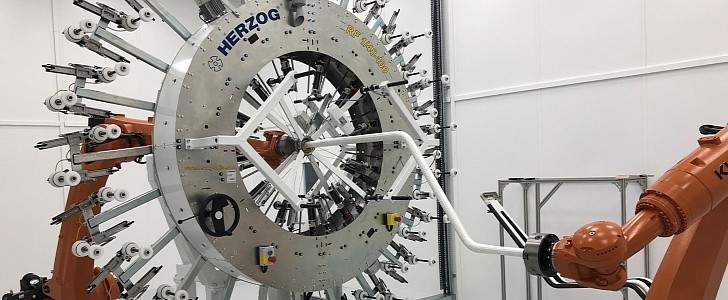The aviation of the future is not just about sustainable fuels and hybrid or electric propulsion, but also about innovative aircraft design. Optimized design, using cutting-edge materials and production techniques, can help make future aircraft more efficient in terms of costs and reduce environmental impact.
Collins Aerospace, a unit of Raytheon Technologies and a well-respected name in the industry, is one of the four companies that were awarded a $3.6 million grant, for four years, to develop aircraft components based on composite materials. Together with Composite Integration, Crompton Mouldings, and Bitrez, Collins will be working on the Next Generation Complex Composite Components (NGC3) project.
Just as ship builders are becoming more interested in innovative composite hulls, versus the traditional stainless steel ones, aircraft manufacturers are also betting on future commercial airplanes that will have composite wings instead of metallic ones. According to Collins, building a composite aircraft requires specific components, such as new types of fuel pipes, “flexible integrated transmission shafts,” and “braided pressure vessels.” All of these components, in turn, are developed using technological innovations, including braiding and Resin Transfer Moulding (RTM).
Composite materials, which are lighter than conventional metallic components, are meant to help with the aircraft's overall weight reduction, system simplification, lower gas emissions, and increased cost efficiency. This new project is in line with the UK Aerospace Technology Institute(ATI)’s long-term strategy, called Accelerating Ambition.
According to this strategy, the industry should focus on advanced manufacturing techniques, such as additive manufacturing (3D printing), and the use of composite materials, to improve the aerodynamic performance of commercial aircraft, which also helps reduce the carbon footprint.
ATI’s strategy also highlights the fact that these key points are particularly important for the UK, where the design and development of aerostructures, especially aircraft wings, represents 25% of the economic activity.
ATI also states that it will support composite technologies that can improve performance as well as projects that focus on the integration of high power-density electrical systems into the aircraft structure.
Just as ship builders are becoming more interested in innovative composite hulls, versus the traditional stainless steel ones, aircraft manufacturers are also betting on future commercial airplanes that will have composite wings instead of metallic ones. According to Collins, building a composite aircraft requires specific components, such as new types of fuel pipes, “flexible integrated transmission shafts,” and “braided pressure vessels.” All of these components, in turn, are developed using technological innovations, including braiding and Resin Transfer Moulding (RTM).
Composite materials, which are lighter than conventional metallic components, are meant to help with the aircraft's overall weight reduction, system simplification, lower gas emissions, and increased cost efficiency. This new project is in line with the UK Aerospace Technology Institute(ATI)’s long-term strategy, called Accelerating Ambition.
According to this strategy, the industry should focus on advanced manufacturing techniques, such as additive manufacturing (3D printing), and the use of composite materials, to improve the aerodynamic performance of commercial aircraft, which also helps reduce the carbon footprint.
ATI’s strategy also highlights the fact that these key points are particularly important for the UK, where the design and development of aerostructures, especially aircraft wings, represents 25% of the economic activity.
ATI also states that it will support composite technologies that can improve performance as well as projects that focus on the integration of high power-density electrical systems into the aircraft structure.







